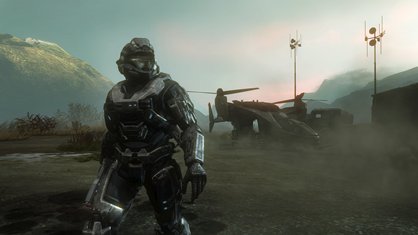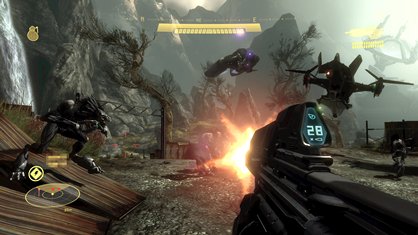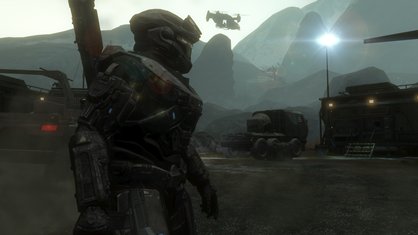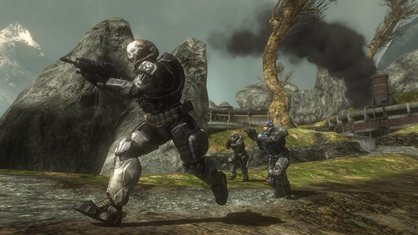Halo Reach's huge battles and new guns
Inside Bungie's last hurrah, and the biggest Halo ever
Back in 2007, Bungie invited us to finish the fight. But in 2010 it looks like we’re going to be starting it all over again, as we look back to the events that lead to the elimination of the Spartan super soldiers, the destruction of a colonised planet and the galaxy-spanning war that took Master Chief three whole games to finally put an end to.

Bungie are at pains to let us know that Halo Reach is most definitely not Halo 4, nor is it a reboot for the entire series. Instead it’s a brand new chapter, told from a different perspective, and – like Halo 3: ODST before it – an opportunity to expand on events in the wider Halo mythology with a grittier, more visceral visual style.
Several of the things that have helped make Halo such an instantly recognisable gaming series have been ejected. Blue skies, grassy plains and sun-dappled beaches make way for thunder storms, mountains of mud, and choking clouds of smoke from settlements under siege. Even the famous Halo theme is gone, fearlessly discarded by the dev team in an effort to reinforce that this isn’t the kind of Halo game where pink aliens will run around waving plasma grenades and cracking jokes.

You play a member of Noble Team, a squad of six comprising one Master Chief-style Spartan II (surprisingly not the main player character) and five lesser Spartan III types. Each has different specialisations, as Spartan IIIs are designed to be most effective in teams, so there’s a sniper, a stealth type, an assault expert and so on.
Although it’s entirely possible that there will be levels devoted to each different character, rather like ODST, there’s an element of customisation that could potentially imbue the lead warrior, known as Lone Wolf, with the characteristics of a different Spartan. Armour abilities replace the one-off equipment of Halo 3, giving persistent, selectable benefits (can we call them perks?) that can be used repeatedly, subject to a cool-down period. One such armour ability lets you sprint at high speed for a short distance; another awards a limited amount of invisibility. Mmm, familiar.

Stealth appears to have a bigger role to play in Reach than in previous offerings of the Halo franchise, as there’s an option to perform a context-sensitive assassination move if you manage to sneak up behind an enemy. Holding down the melee button rewards you with a third-person view of a brutal execution – a feature which, if the debates at Bungie come out in favour of including it in multiplayer, sounds like it could cause more harsh words to be uttered across Xbox Live than any amount of noob-enraging teabagging in Halo 3.
While the familiar triumvirate of gun, grenade and melee remains in place, the armoury has been streamlined to accentuate the differences between each type of weapon and remove duplicates. For example, the spike grenades that were functionally identical to plasmas have been cut, and the seldom-seen incendiaries have also been deemed surplus to requirements.
Sign up to the GamesRadar+ Newsletter
Weekly digests, tales from the communities you love, and more

Guns are much more powerful than in previous games, and the human weapons now hit instantaneously – there’s no need to lead a target to compensate for lag. An assault rifle can chew through a pack of enemies at close range, but online campers will be dismayed to find that the sniper rifle has been nerfed by greatly increasing its reload time.
Martin Kitts is a veteran of the video game journalism field, having worked his way up through the ranks at N64 magazine and into its iterations as NGC and NGamer. Martin has contributed to countless other publications over the years, including GamesRadar+, GamesMaster, and Official Xbox Magazine.


